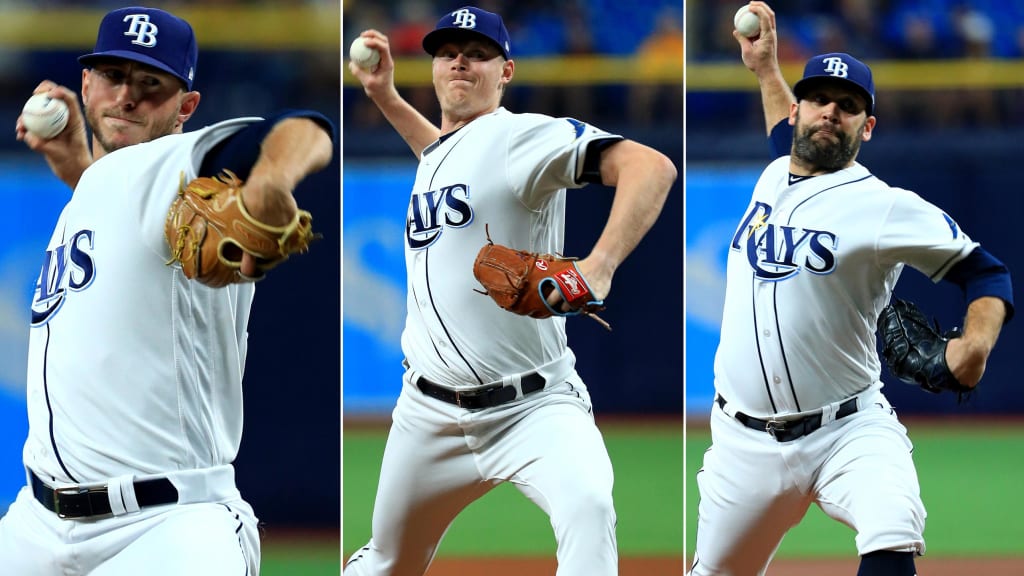
PORT CHARLOTTE, Fla. -- Of the several rule changes that became official last week, the one that has drawn the most attention has been the three-batter minimum. The rule forces a pitcher to face at least three batters or record the final out of an inning before a pitching change can be executed, excluding injury.
Like every other team in the Majors, the Rays, who led the Majors with a 3.66 bullpen ERA last season, will have to strategize a bit differently.
"We're going to learn and we're going to talk through it," said Tampa Bay manager Kevin Cash. "I know our guys are really smart and will dive into it, but there will be games early that are on the line where, in my opinion, [the rule] will come into effect."
How much will it impact the Rays' decisions?
With how Cash and the Rays like to play matchups, there will certainly be some differences to the team's approach this season. How drastic the changes will be remains to be seen.
Aided by their frequent use of an opener, the Rays made 603 pitching changes in 2019, ranking second in the Majors behind the Red Sox, who completed 639 changes. Of the 603 pitching changes by Tampa Bay last season, only 44 of them would be considered a violation in 2020 with the new rule in place.
"I think we've done a good job in the past in identifying the pitchers that handle both left-handed and right-handed hitters," Cash said, "but you're going to get some matchups in there that you wouldn't have gotten last year. I'm looking forward to those conversations."
Who could it affect?
Of the players with an opportunity to make the Opening Day roster, Oliver Drake, Peter Fairbanks, Aaron Loup and Andrew Kittredge have the most one-sided pitching splits, so they could be put in some slightly uncomfortable spots with the new rule.
Against right-handed hitters, Drake allowed eight home runs and a .865 OPS over 115 plate appearances in 2019. In 104 plate appearances against left-handers, however, the opponent OPS against him dropped to .360. Despite the splits, of Drake's 50 appearances last season, only seven of them would be considered in '20, which shows there's a level of confidence with the right-hander.
"Every year I go into the offseason thinking where I can improve from last year," Drake said. "Having a little more success against right-handers is something I definitely looked into. But at the same time, I'm just trying to figure out how to get better against everyone."
For Loup, who is battling for one of the last few roster spots as a non-roster invitee, the difference in splits is pretty clear. In 2018, his last full season, opposing right-handed hitters finished with a .935 OPS against the southpaw reliever. Loup, however, limited left-handers to a .678 OPS.
The one concern with Loup is that he had 18 outings in 2018 in which he faced two hitters or less, which won't be allowed moving forward. Loup doesn't necessarily fit the LOOGYs (lefty one-out guys), but the 32-year-old will have to find a way to retire right-handers consistently moving forward.
Fairbanks and Kittredge also struggled with one side of the plate, but both pitchers combined for just one outing that would be considered illegal in 2020. Though a small sample size, Fairbanks struggled against righties last year, allowing a 1.249 OPS in 53 at-bats. Kittredge, on the other hand, allowed a .915 OPS against lefties, while righties were limited to a .619 OPS in '19
It'll be an adjustment for some pitchers on the staff, but as a whole, the Rays shouldn't have too much to worry about with the new rule change. But we'll find out soon.
